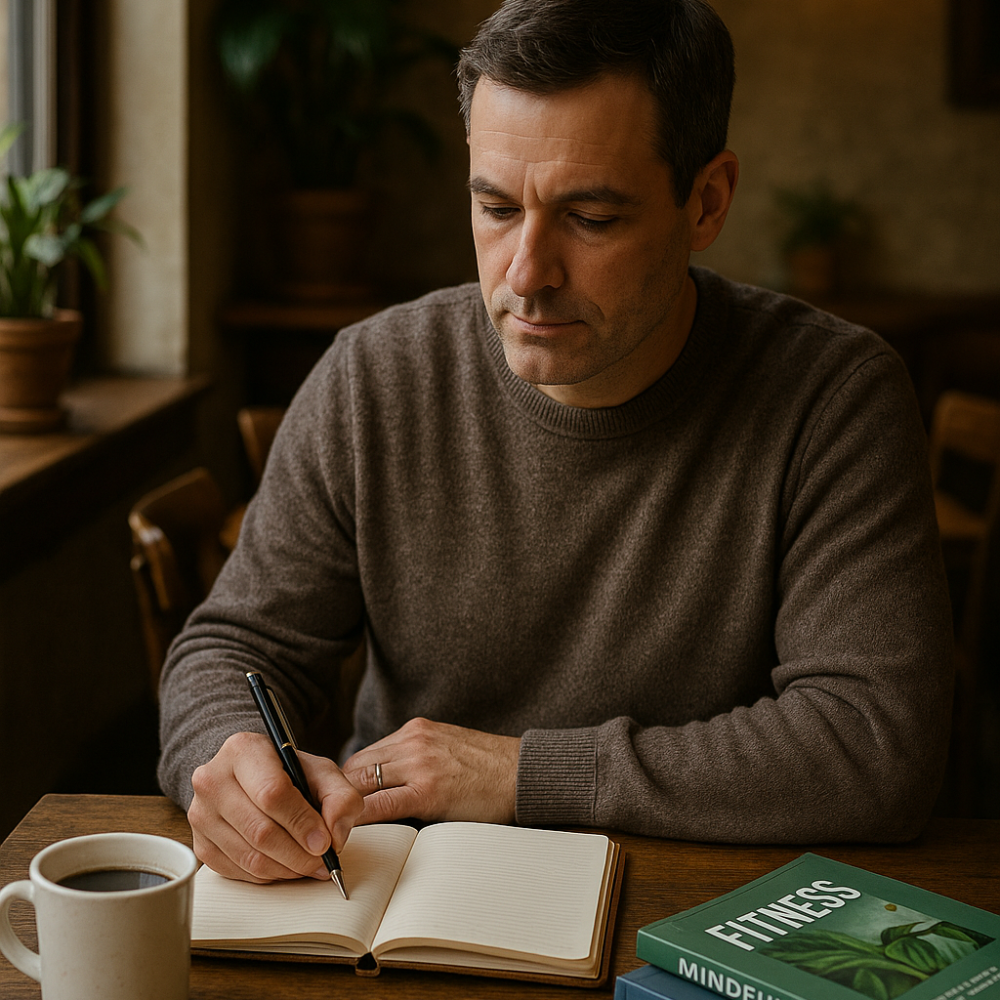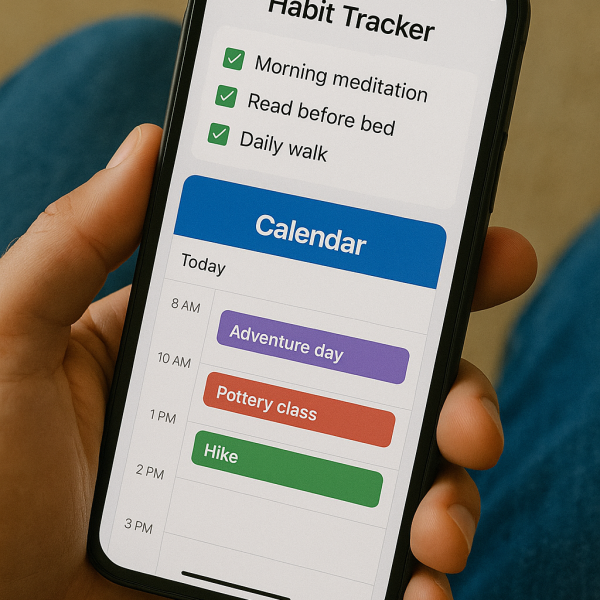Creating Your Personalized Leisure Routine Framework

The day I realized I had gone three months without doing a single thing just for fun was the day I knew something had to change.
I was all work and chores, with leisure relegated to “someday when I have time” which, spoiler alert, never actually arrived on its own.
That wake-up call led me to develop what I now call a personalized leisure routine framework.
Sounds fancy, but it’s really just a practical approach to making sure fun and restoration actually happen in my life.
And let me tell you, intentional leisure planning for mental health has been a complete game-changer.
Setting Realistic Time Blocks
If you try to go from zero leisure time to two hours daily, you’re setting yourself up for failure.
I started with just 15 minutes a day, a weekend afternoon twice a month, and one “adventure day” per quarter.
Even that modest plan felt revolutionary.

The most successful approach I’ve found is thinking in three time horizons:
- Daily micro-leisure: These are short but meaningful pockets of enjoyment. For me, it’s 20 minutes of reading before bed and a 10-minute morning meditation. My colleague does daily crossword puzzles during lunch. Even busy parents I know swear by their “coffee and journaling” ritual before the kids wake up.
- Weekly anchors: These are longer activities you protect at all costs. My non-negotiable is Sunday afternoon hikes—rain or shine, those three hours are blocked on my calendar like they’re the most important meeting of my week (because they are).
- Monthly expansions: These are the more time-intensive experiences that require planning. Think day trips, workshops, or social gatherings. I have a standing monthly pottery class and a quarterly overnight camping trip that gives me something to look forward to.
The exact timing doesn’t matter what matters is that it’s realistic for YOUR life.
I used to beat myself up for not having the same leisure schedule as my retired neighbor until I realized,
duh, we’re in completely different life stages.
Balancing Your Activities

One mistake I made early on was loading up on too many high-energy hobbies and then burning out.
The solution was finding an active and passive leisure balance.
Active leisure includes things like hiking, tennis, creative projects, and social gatherings.
Passive leisure includes reading, a slow walk in the park, or relaxing in a hammock.
My sweet spot is about 70% active and 30% passive, but you may find a different mix works better.
Remember: passive leisure should support active leisure, not replace it.
Too much screen time or Netflix binges can leave you feeling emptier instead of restored.
Adapting Through Seasons and Life Changes

Your leisure needs shift with the seasons and with life’s demands.
In winter, I lean more into indoor creative projects like pottery,
while summer is perfect for hiking and outdoor exploration.
Big transitions require flexibility.
When I became a parent, I had to scale back but I built sustainable leisure habits like baby-and-me swimming,
which gave me joy without overwhelming my schedule.
Incorporating Variety
Our brains crave novelty. I rotate hiking, yoga, pottery, cooking, book club, journaling, and occasional workshops.
I used to be a one-hobby person (all hiking, all the time) until I realized I was getting diminishing returns from the same trails every weekend.
Now I make sure my leisure routine includes physical activities (hiking, yoga),
creative pursuits (pottery, cooking), social connections (book club, game nights),
quiet contemplation (meditation, journaling), and learning opportunities (language practice, workshops).

I also experiment with “curiosity explorations” trying one new activity a month.
Some experiments become new passions; others are one-and-done experiences.
Both outcomes are perfectly valid! My disastrous attempt at rock climbing gave me a funny story, even if it didn’t become a regular hobby.
Related Savvy Man Lifestyle Reads:
Digital Tools for Leisure Planning
For someone who resisted digital planning for years, I’ve become surprisingly dependent on a few key tools for maintaining my leisure routine.
Calendar blocking has been my number one strategy.
I literally schedule leisure appointments with myself and treat them with the same respect as work meetings.
“Sorry, I have a prior commitment” is a complete sentence, even when that commitment is with yourself.

I also use a habit tracker for leisure to reinforce consistency.
Checking a box after journaling or meditating is surprisingly motivating
Something about checking that box gives my reward-seeking brain just enough dopamine to keep the habit going.
I block leisure in my calendar like any meeting.
Habit trackers keep me accountable for micro-leisure, , I keep a running list of joy list ideas in my notes app for inspiration when free time pops up.
basically an inventory of activities that reliably make me happy.
When I find myself with unexpected free time, I consult the list rather than defaulting to mindless scrolling.
Protecting Leisure from Work Encroachment
In our always-on culture, protecting leisure is tough.
I created a shutdown ritual closing my laptop, making tomorrow’s to-do list, and literally saying, “Work is done.”
I also keep separate devices. My “leisure phone” has no email or Slack, only podcasts, reading apps, and music.
For men navigating careers and family responsibilities, protecting leisure is essential for work-life balance for men over 40.
Sometimes that means saying no. “I’m not available then” is a complete sentence. Your leisure deserves the same respect as any meeting.

Frequently Asked Questions
What is a personalized leisure routine?
A personalized leisure routine is a structured yet flexible framework of activities designed to bring joy, relaxation, and balance into your daily life. It helps ensure fun and restorative practices don’t get pushed aside by work or chores.
How do you balance active and passive leisure activities?
Include both: active activities like hiking, sports, or creative hobbies, and passive activities like reading or gentle relaxation. A practical target is 70% active and 30% passive, but the right mix depends on your energy, goals, and season of life.
Why is leisure important for mental health?
Intentional leisure lowers stress, boosts mood and creativity, and prevents burnout. It creates space for reflection, connection, and joy—key ingredients for long-term mental well-being.
How can I make time for leisure in a busy schedule?
Start with 10–15 minutes of micro-leisure daily (journaling, meditation, reading). Protect a weekly anchor (e.g., Sunday walk or hobby session), and plan monthly or quarterly activities in advance so they actually happen.
What tools can help with leisure planning?
Use calendar blocking, habit-tracker apps, and a simple “joy list” in your notes app. Treat leisure appointments like work commitments and track streaks to stay consistent.
Conclusion
By creating a personalized leisure routine framework, you take control of your well-being.
Start with 10 minutes daily, protect one weekly anchor, and add a monthly expansion.
The key is consistency. By creating downtime routines, you’ll ensure joy, rest, and growth become non-negotiable parts of your life helping you thrive rather than just survive.
